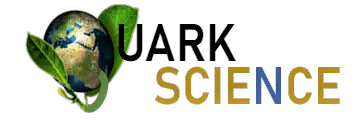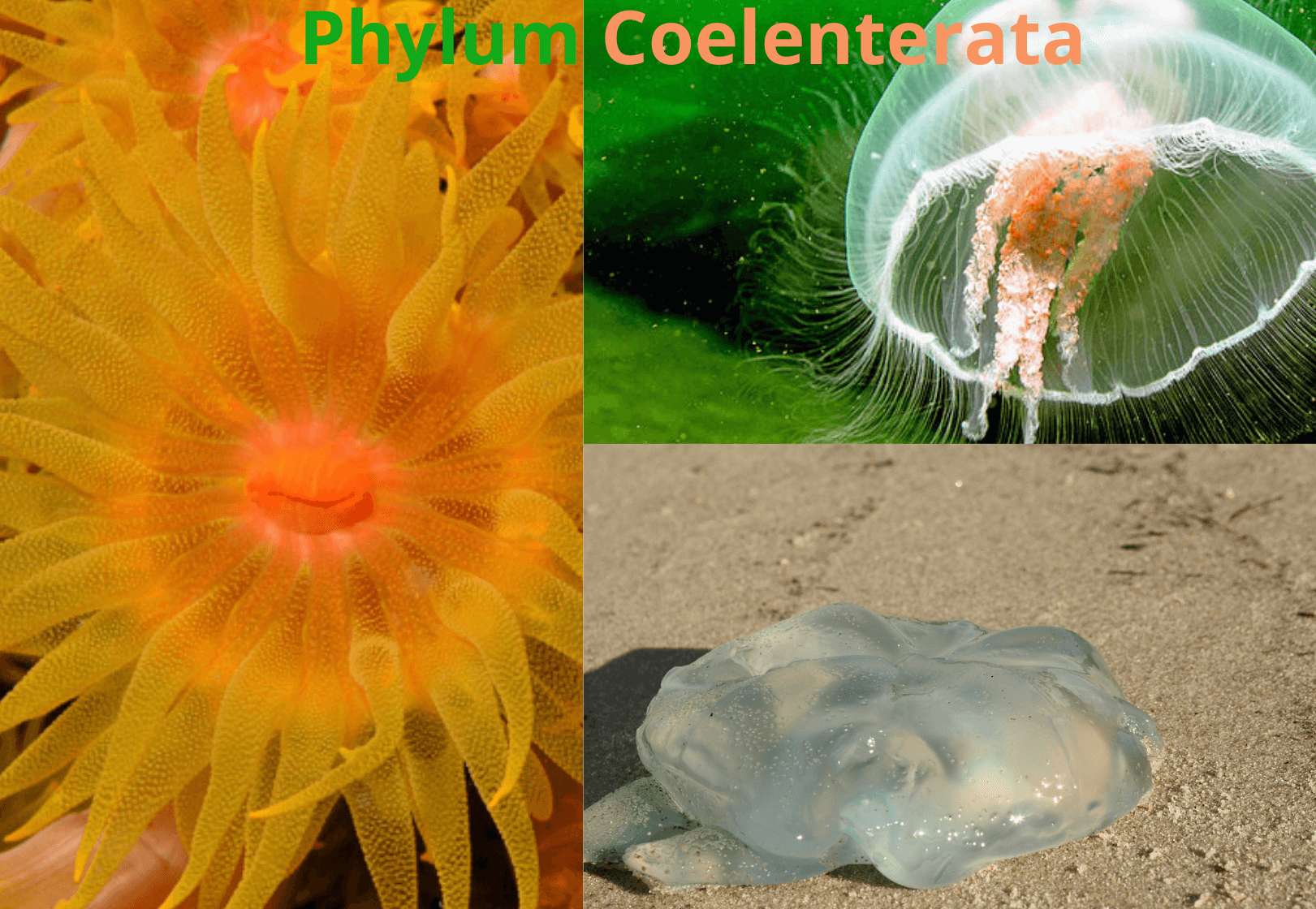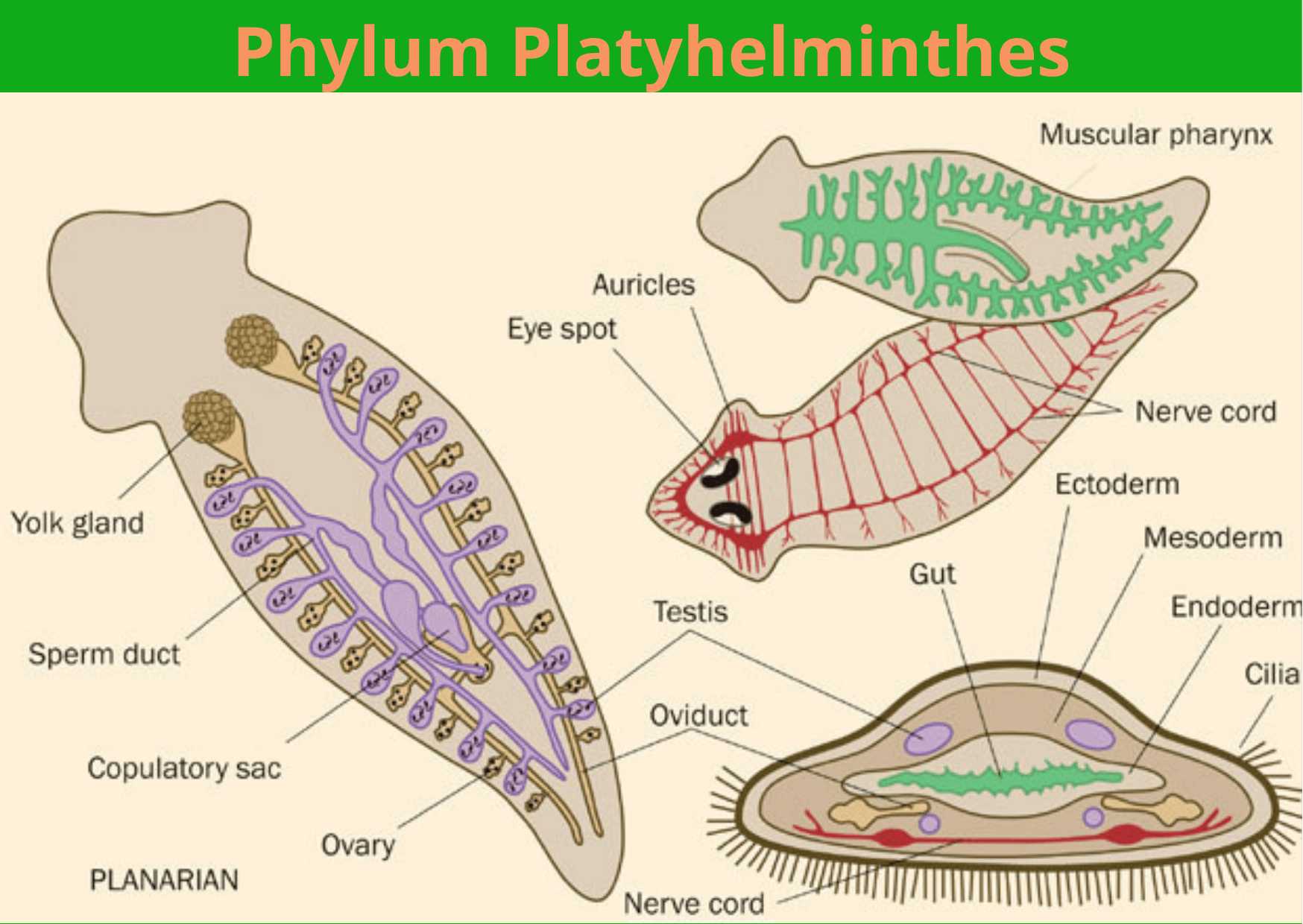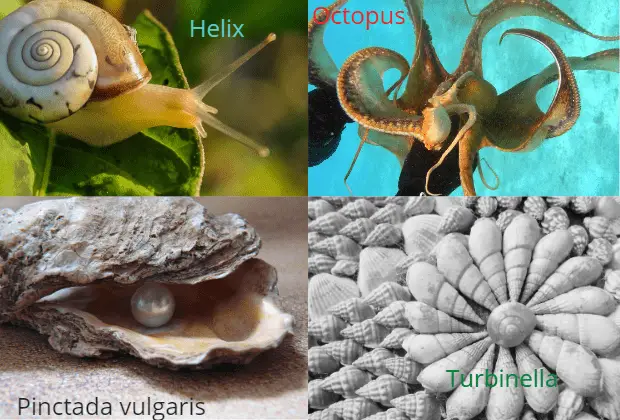Phylum Echinodermata consists of spiny skinned animals exclusively found in marine habitat. The word Echinodermata was coined by Jacob Klein which is a Greek word meaning echinos = Spiny and derma = Skin. It consists of about 7,000 living species and approx. 13,000 extinct species which are discovered in the form of fossils. It is the largest phylum in term of number of marine species. It does not contain any fresh water & terrestrial forms and hence are exclusively marine.
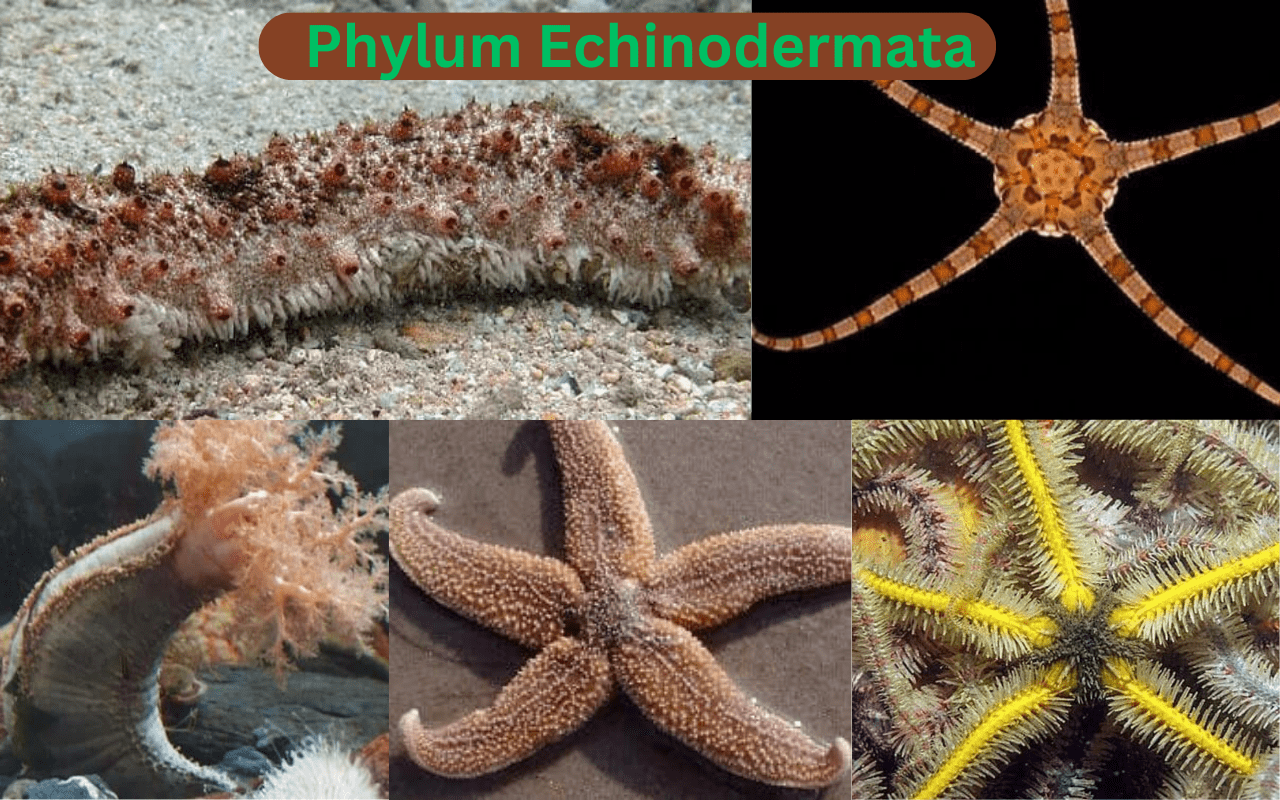
General Characteristics of Phylum Echinodermata
Habitat: They are exclusively marine and are found in biogeographic region of oceans such as Indian, pacific, Artic, Atlantic oceans and Mediterranean seas. They habitat from shallow region to bottom (benthic) of the ocean except few species like sea cucumber which are pelagic i.e. living on surface.
Body Layer and Symmetry: Body is triploblastic with radial symmetric. Larva forms are bilateral. Segmentation and cephalization are totally absent in both larva and adult forms. They contains endoskeleton like Chordata.
Colem: They are coelomate animals. Enterocoelous type of coelom is present. Coelom is lined with ciliated peritoneum and acts as water vascular system. Presence of water vascular system is the unique characteristic feature of phylum Echinodermata. It helps in feeding, excretion, locomotion and gaseous exchange.
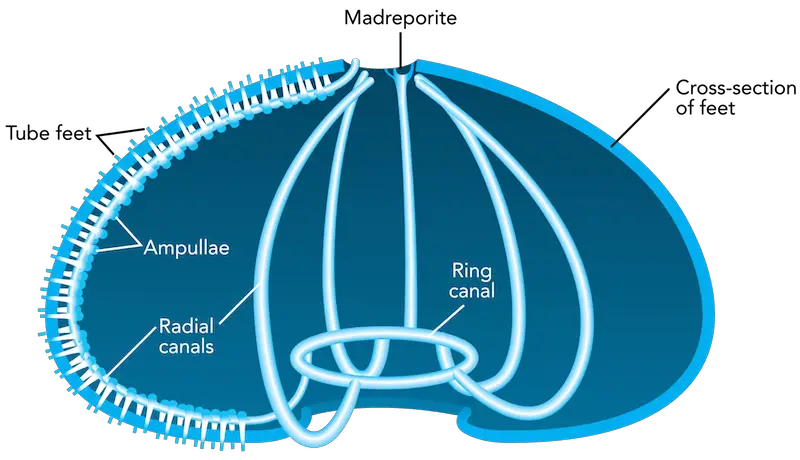
Body Shape: Various body shapes like star, globular, spherical, elongated and flattened forms are found. Distinct head is absent. But has distinct mouth(oral) and anus (aboral). Body surface is marked by five radiating areas called as ambulacral areas.
Digestive System: Alimentary canal is complete which may be coiled or straight. Mouth and anus are present on opposite surface.
Some echinoderms like sea urchin have masticating organ for breaking food into smaller particles in the alimentary tract which is called as Aristotle’s lanterns. Aristotle’s lantern is made up of five ossicles which in terns are made of 250 skeletal elements.
Respiratory System: It takes place by minute skin gills (dermal branchiae) or papulae in star fish and sea stars, by peristomial gills in sea urchin, by genital bursae in brittle stars and by cloacal respiratory tree in sea cucumber.
Circulatory System: Presence of open type of blood vascular system, enclosed inside coelomic perihaemal channels. Respiratory pigments and heart are absent in echinoderms.
Excretory System: Excretory system is not specialized. Excretory organs are absent. Removal of nitrogenous waste take place through general body surface with the help of water vascular system.
Nervous System: It is primitive type without brain. Nervous system consists of nerve rings with radiating branches.
Regeneration: Echinoderms shows the high power of regeneration. Autotomy and evisceration (vomiting of visceral) actions are used to defence and confuse enemies.
Reproduction: Sexes are separate. Oviparous (egg laying). Fertilization is external. Eggs are homolecithal showing radial cleavage.
Development: It is indirect through free swimming larval stage. Larva feeds on phytoplankton, zooplanktons or left yolk inside egg (lecithotrophic). There are different types of larva present in echinoderms.
Different Larval Forms of Echinoderms and what they are called (Common name)
| Larva of Different Classes of Echinoderm | Common Name |
|---|---|
| Asteroids larva | Dipleurula, Bipinnaria |
| Ophiuroidea larva | Ophiopluteus |
| Echinoidea larva | Echinopluteus |
| Holothuroida larva | Auricularia |
| Crinoidea | Doliolaria |
Classification of Echinodermata (Classes)
Echinodermata is classified on the basis of number and type of arms, shape or position of madreporite and others characteristic. It is classified into 2 subphylum and 5 classes. Eleutherozoa subphylum consists of four classes – Asteroidea, Ophiuroidea, Echinoidea and Holothuroidea while subphylum – Pelmatozoa contains one class – Crinoidea.
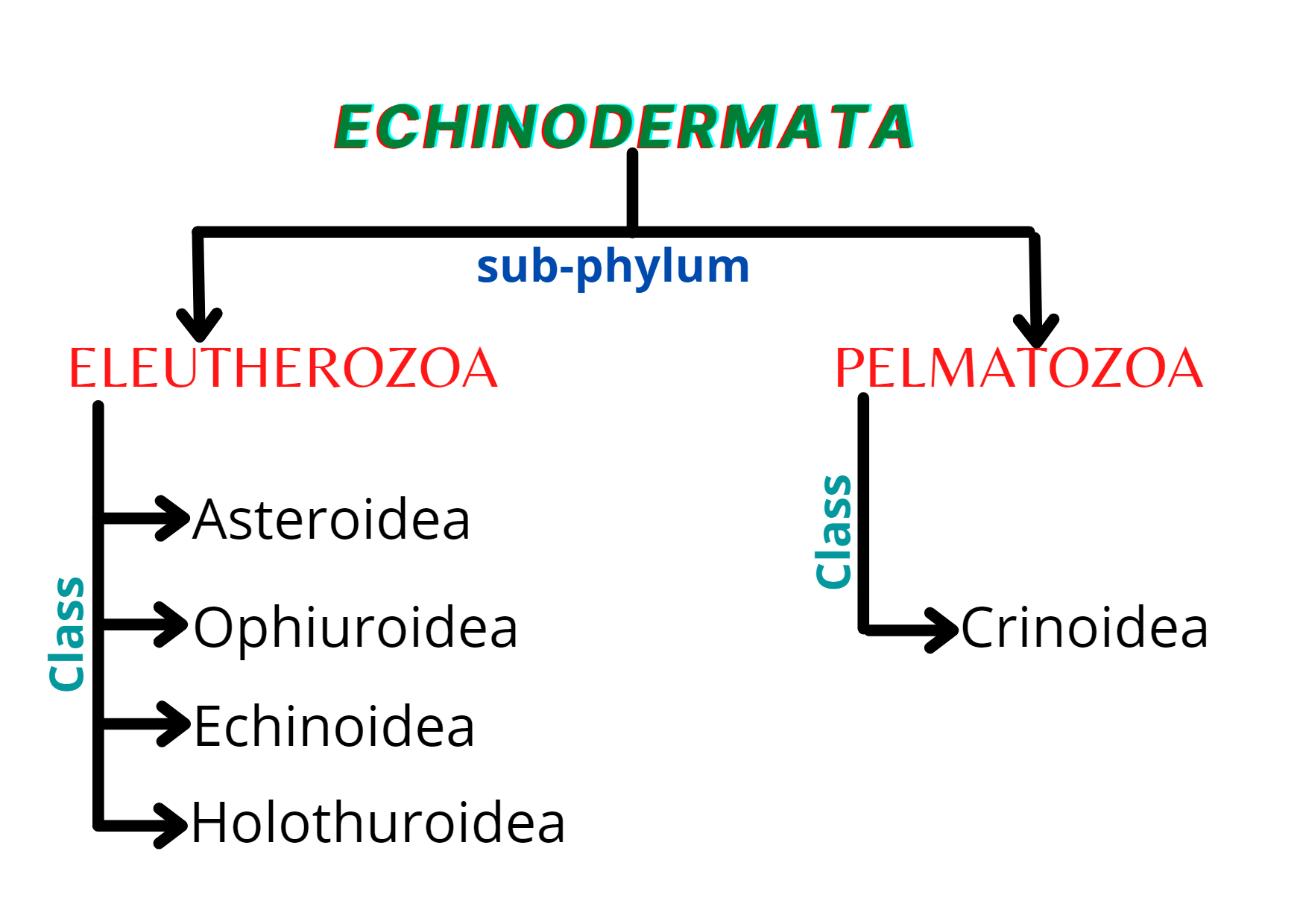
Sub phylum – Eleutherozoa
(Gr; eleutheros = free, zoios = animal)
It includes free living echinoderms including 4 classes.
Asteroidea
(Gr; aster = star; eidos = from)
- Body is star shape or pentagonal.
- Arms 5-50 with 2-4 rows of tube feet.
- Madreporite and anus is present in aboral surface and mouth is present on oral surface.
- Minute pincers called pedicellariae are present. It acts as defence organ.
- Examples: Asterias (starfish), Astropecten (sea star or starfish), Pentaceros (sea pentagon) etc.
Ophiuroidea
(Gr; ophis = snake; oura = tail; eidos = form)
It includes echinoderms whose terminal end of arms resembles snake tails.
- Body is star shaped having central disk with flexible 5 arms.
- Tube feet is nonlocomotory without suckers.
- Anus and pedicellariae absent.
- Free living larva called ophiopluteus is present.
- Ambulacral groove (which acts as water vascular system) is absent.
- Madreporite is present on oral surface & anus is absent.
- Examples: Ophioderma (brittle star), Ophiolepsis, Amphiphyton (basket star) etc.
Echinoidea
(Gr; echinos = spiny; eidos = from)
- Body is spherical, disk or semispherical shape.
- Arms are completely absent.
- Skeleton has movable spines with 3 jawed pedicellariae.
- Aristotle’s lantern (acts as masticating organ or food crusher) is the characteristic feature of this class and present in sea urchin.
- Examples: Echinus (sea urchin), Echinocardium (Heart urchin), Clypeaster (Cake urchin) etc.
Holothuroidea
(Gr; holothurion = sea cucumber; eidos = from)
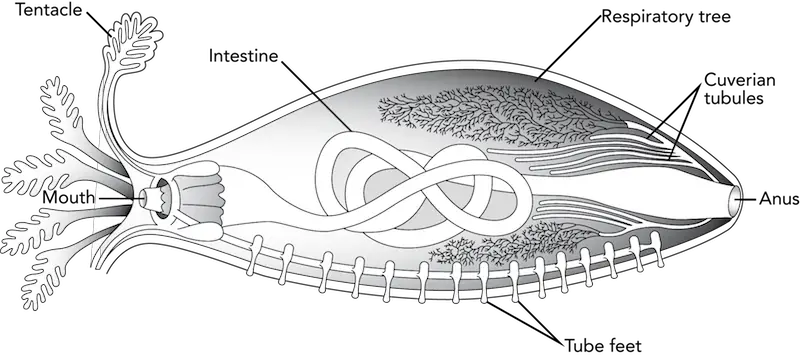
- Body is elongated, cucumber shaped.
- Spines, arms and pedicellariae all absent.
- Mouth is anterior consisting of retractile tentacles.
- Madreporite is present on oral surface.
- Examples: Holothuria (sea cucumber), Cucumaria (sea cucumber)
Sub phylum – Pelmatozoa
(Gr; pelmatos = stalk; zoios = animal)
Subphylum pelmatozoa includes staled, sedimentary echinoderms. It consists of only one class – Crinoidea.
Crinoidea
(Gr; crinon = lily; eidos = from)
- It consists of stalked animals having lily flower like appearance.
- It is attached to substratum by aboral surface or by stalk.
- Both mouth and anus are present in oral surface.
- Many arms with pinnules forming feather.
- Ambulacral grooves with scattered ossicles.
- Tube feet without sucker.
- Madreporite, spines and pedicellariae all absent.
- Examples: Antedon (sea lily or feather lily).
Examples of Echinodermata
There are varied examples of phylum echinodermata. Some common examples of echniderms with their common names are tabuted below.
| S.N | Examples of Echinoderms | Common Name |
|---|---|---|
| 1 | Asterias | Starfish |
| 2 | Ophiolepsis | Brittle star |
| 3 | Echinus | Sea urchin |
| 4 | Holothuria | Sea cucumber |
| 5 | Antedon | Sea lily or feather star |
Importance of Echinodermata
Echinoderms are economically as well as medicinally importance. Some species of echinoderms are harmful also.
Economic Importance
- Many species of echinoderm like starfish, sea cucumber, sea urchins etc. are served as delicious sea food in many countries like Japan, Spain, Peru, French and in some Asian countries.
- Sea urchin produces huge amounts of eggs which are served as delicious items in restaurants.
- It contributes in establishing and maintaining ocean and sea ecosystem.
- Many species of echinoderms are used for lab and research purposes.
- Some species are used as animal feed and for craft trades.
Medicinal Importance of Echinoderms
- Recent studies had found that some species of echinoderms like E. sepositus are source of antioxidant and antimicrobial compounds.
- Some species of echinoderms are non-toxic towards HeLa cells. HeLa cells are the first immortal human cells which divides infinitely in laboratory. This nature of echinoderms is found to bring new tools in biotechnology and pharmaceutical applications.
Harmful Aspects
- Sea cucumber produces toxins called as holothurin, which are harmful for other animals
- The spines present in echinoderm cause injury on accidently being touched. They cause hinderance for swimmers, divers and oceans explorers.
FAQs on Phylum Echinodermata
What is the main function of ambulacral system in echinoderms?
It’s main function is locomotion in echinoderms. It is derived from larval coelom.
What is the purpose of Aristotle’s lantern found in sea urchin?
Aristotle lantern is found in echinoderms and is the characteristic feature of sea urchin mainly. It is a masticating organ which helps in breakdown of large food particles for digestion.
Give some unique features of Echinodermata?
Presence of pedicellariae, ambulacral system, Aristotle’s lantern (in sea urchin) and exclusively marine habitat are unique feature of echinoderms.
Reference
1. https://manoa.hawaii.edu/exploringourfluidearth/biological/invertebrates/phylum-echinodermata
2. https://en.wikipedia.org/wiki/Echinoderm
3. Jordan EL and Verma PS. 2018. Invertebrate Zoology. 14th Edition. S Chand Publishing.
